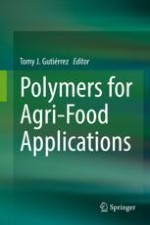2019 | OriginalPaper | Buchkapitel
3. Nano and Microencapsulated Nutrients for Enhanced Efficiency Fertilizer
verfasst von : Débora França, Lucas Luiz Messa, Claudinei Fonseca Souza, Roselena Faez
Erschienen in: Polymers for Agri-Food Applications
Aktivieren Sie unsere intelligente Suche, um passende Fachinhalte oder Patente zu finden.
Wählen Sie Textabschnitte aus um mit Künstlicher Intelligenz passenden Patente zu finden. powered by
Markieren Sie Textabschnitte, um KI-gestützt weitere passende Inhalte zu finden. powered by
